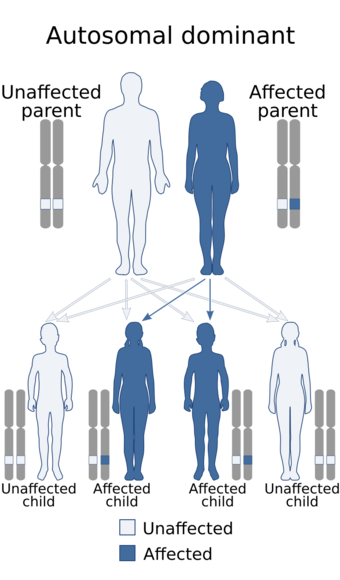Medicine:Omodysplasia 2
From HandWiki
| Omodysplasia 2 | |
|---|---|
 | |
| Omodysplasia 2 is inherited in an autosomal dominant manner. |
Omodysplasia type 2 is a very rare genetic disorder characterised by abnormalities in the skull, long bones and genitourinary system.
Clinical features
These can be grouped under those evident in the skull/face, the long bones and the genitourinary system
- Skull
- Anteverted nostrils
- Bifid nasal tip
- Depressed nasal bridge
- Fontal bossing
- Long philtrum
- Low set ears
- Long bones
- Short first metacarpal
- Short humerus
- Genitourinary
- Genitourinary hypoplasia
Genetics
This condition is inherited in an autosomal dominant fashion.
Mutations in the Frizzled Class Receptor 2 (FZD2) gene have been associated with this condition.[1]
Diagnosis
Differential diagnosis
Treatment
There is no currently known treatment for this condition.
History
This condition was first described by Maroteaux et al in 1989.[2]
References
- ↑ Nagasaki K, Nishimura G, Kikuchi T, Nyuzuki H, Sasaki S, Ogawa Y, Saitoh A (2018) Nonsense mutations in FZD2 cause autosomal-dominant omodysplasia: Robinow syndrome-like phenotypes. Am J Med Genet A doi: 10.1002/ajmg.a.38623
- ↑ Maroteaux P, Sauvegrain J, Chrispin A, Farriaux, JP (1989) Omodysplasia. Am J Med Genet 32:371-375
External links
| Classification | |
|---|---|
| External resources |
 |

